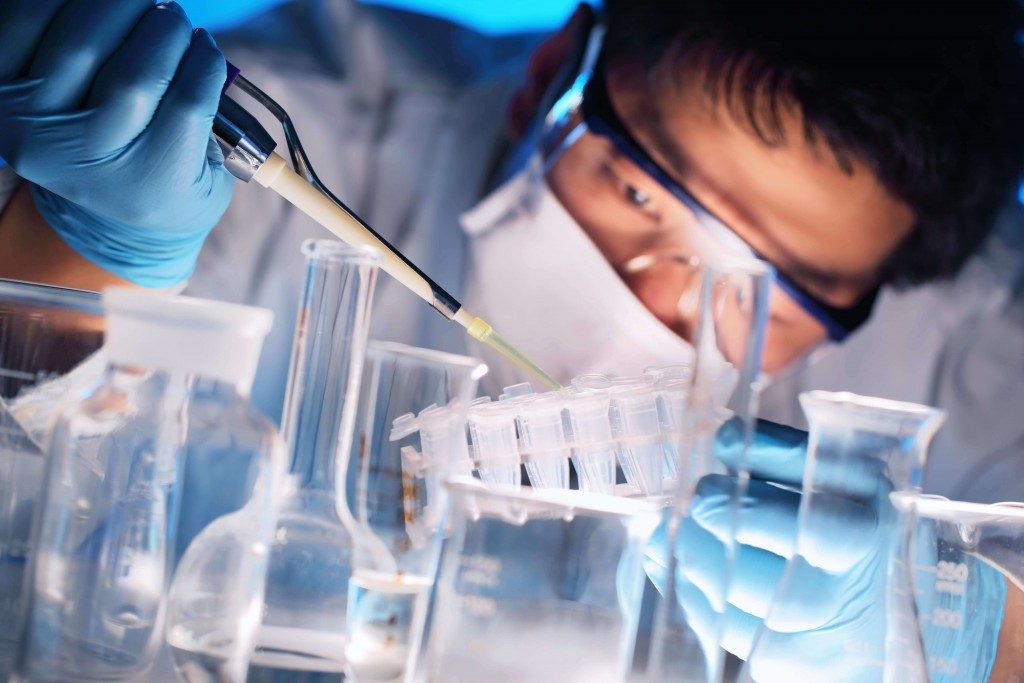Laboratory Hazards
To ensure and improve laboratory safety, it’s essential to be aware of its common hazards. Safety planning, safety equipment, and safety training should take into consideration these following hazards to be comprehensive and responsive:
Chemical (from reactive agents, toxins, and corrosives), biological (microbes, viruses, bacteria), physical (projectiles from equipment, cold, heat, and even noise), radiation (stemming from radioactive substances and equipment), fire (from flammable substances and heat-or-fire-generating equipment), shock (from electrical components), mechanical (cuts, punctures, impact injuries from moving machinery), airborne (non-chemical or biological airborne hazards such as dust), and ergonomic hazards (repetitive motion and staying in a certain position for long periods of time that can lead to musculoskeletal disorders).
Improving Laboratory Safety
With an abundance of hazards in a laboratory, there is a dire need toincrease the level of safety for its personnel and visitors. As such, we’ll be taking a look at various tips and ways to improve the overall safety and responsiveness of a laboratory, whether it’s private/company-owned such as those in pharmaceutical companies, or one that’s used for educational purposes such those in schools and research centres:
#1 Creating a Comprehensive Safety Program
A comprehensive safety program would include not only a safety plan or emergency protocol, but also provide a detailed list of all the equipment, environmental conditions, and the necessary training to ensure the best possible level of safety. To do so, all present and possible hazards in the particular laboratory should be taken into account when establishing the program, and should also consider safety protocols for non-laboratory personnel visiting the area.
#2 Never Compromise on Equipment and Machinery Quality
Laboratory equipment can be expensive, especially those that are top of the line in terms of functionality, features, and safety. While it isn’t necessary to purchase the most expensive and cutting-edge equipment and tools, it’s still important not to settle for cheap and substandard equipment, as they won’t only compromise results but also the safety of the personnel and visitors in the laboratory. For example, a high-quality lab freezer won’t only preserve specimens properly and lower risk of contamination, but it can prevent explosion or fire from volatile or caustic substances.
Additionally, the choice of safety mechanisms such as fire suppression systems, emergency decontamination equipment, as well as personal protective equipment (PPE) should also be held at a high standard.
#3 Having Contingency Plan for Everything
The laboratory and its personnel should be prepared for any type of incident that may occur based on the hazards identified. Personnel should be provided with the tools required to alert and communicate with personnel outside the laboratory.
Additionally, the laboratory should have access to all the tools and equipment (or even external help) needed to address the issue and ensure the safety and health of those compromised in the laboratory.
#4 Drills and Spot Checks

To ensure that the staff are well-trained and know how to deal with any incidents in the laboratory, it’s important to routinely perform safety drills, which should vary depending on which type of incident the drill is responding to. Additionally, supervisors need to have unannounced spot-checks in the laboratory to ensure that equipment and tools are properly stored, used, and maintained, and also to identify any issues that weren’t covered in the comprehensive plan.
The Takeaway
A laboratory can be considered as safe and secure if it has a sterile controlled environment, personnel who are properly trained to handle equipment and substances (and also emergencies), and has a safety plan and corresponding safety equipment in place to ensure the safety of both personnel and visitors alike. By following these laboratory safety tips, you’re one step closer to achieving a safe and emergency/incident-responsive laboratory.

